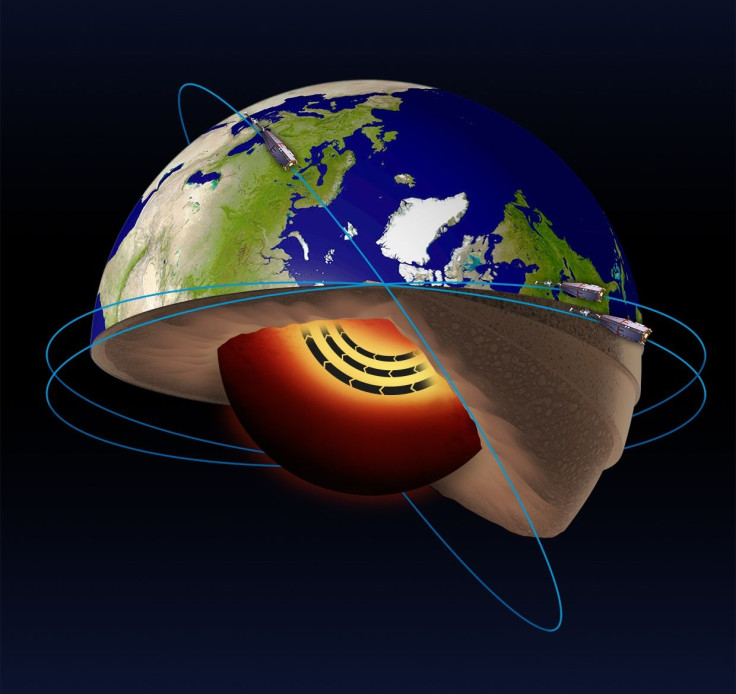Scientists Discover A Molten Iron Jet Stream In Earth’s Outer Core Using A Swarm Of ESA Satellites

You might have heard of the jet streams in Earth’s atmosphere. These fast-moving bands of winds are found in the upper levels of the atmosphere and are created due to Earth’s rotation, and its air being warmed up by solar radiation.
It turns out our planet has another jet stream, and this one is located far, far below its surface.
In a study published Monday in the journal Nature Geoscience, a team of scientists describe the discovery of a jet stream in Earth’s molten iron core. The presence of this jet stream, which is circling the Northern Hemisphere westward at over 25 miles per year, was inferred through changes detected in the Earth’s magnetic field by the European Space Agency’s Swarm satellites.
Our planet’s magnetic field is generated by molten iron swirling around in the planet’s outer core around a smaller, solid core — a process that creates a self-sustaining geomagnetic dynamo. The motion of liquid iron in the outer core is itself driven by the continuous loss of heat from the inner core.
So, tracking changes in the magnetic field can reveal how the superheated, swirling mass of molten iron in the outer core behaves. This is where the trio of Swarm satellites, launched in 2013, plays a crucial role.
“The European Space Agency's Swarm satellites are providing our sharpest X-ray image yet of the core. We've not only seen this jet stream clearly for the first time, but we understand why it's there,” lead researcher Phil Livermore from the University of Leeds in England said in a statement. “We can explain it as an accelerating band of molten iron circling the North Pole, like the jet stream in the atmosphere.”

The jet stream, located roughly 3,000 km (1,860 miles) below the Earth’s surface — a region where the molten outer core meets the solid mantle — is estimated to be over 260 miles wide. Its speed of over 25 miles a year is three times faster than the typical speed of liquid in the outer core and hundreds of thousands of times faster than the speed at which Earth’s tectonic plates move.
The researchers believe this jet stream exists due to the motion of molten iron along a boundary between two different regions in the core. When the liquid approaches this “tangent cylinder,” which is aligned with Earth’s axis of rotation, from both sides, it is squeezed sideways, resulting in a fast-moving jet.
“Of course, you need a force to move the liquid towards the boundary. This could be provided by buoyancy, or perhaps more likely from changes in the magnetic field within the core,” co-author Rainer Hollerbach, also from the University of Leeds, said in the statement.
The jet stream is also accelerating, and is estimated to have trebled in speed since 2000. However, why this is happening is not yet entirely clear.
“Further surprises are likely. The magnetic field is forever changing, and this could even make the jet stream switch direction,” Rune Floberghagen, the ESA’s Swarm mission manager, said in a separate statement. “With the unprecedented resolution now possible, it’s a very exciting time – we simply don’t know what we’ll discover next about our planet.”
© Copyright IBTimes 2024. All rights reserved.












